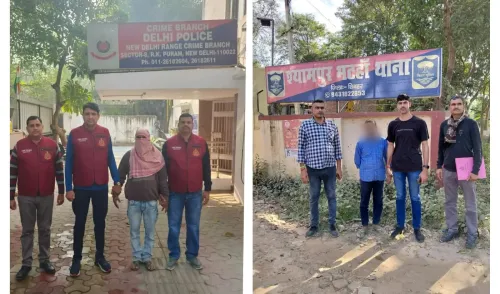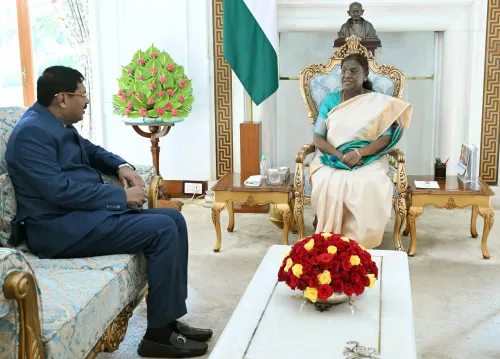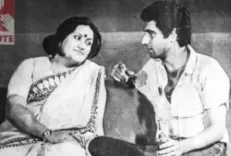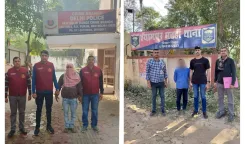How Are India and Sri Lanka Strengthening Defence Ties?

Synopsis
Key Takeaways
- The 11th Army-to-Army Staff Talks were held in Bodhgaya, enhancing defence ties.
- Both countries are committed to regional peace and stability.
- The Mitra Shakti exercise involves multiple military contingents from both nations.
- Joint drills focus on interoperability and best practices.
- The exercise includes tactical training for counter-terrorism operations.
Patna, Nov 21 (NationPress) India and Sri Lanka recently conducted the 11th Army-to-Army Staff Talks (AAST) in Bihar's Bodhgaya, focusing on enhancing interoperability and strengthening their overall defence partnership.
Both nations reaffirmed their dedication to fostering strong bilateral relations aimed at promoting regional peace and stability.
The 11th AAST took place in Bodhgaya from November 18 to 20, 2025, with a six-member delegation from Sri Lanka led by Major General Ravi Pathiravithana, the Director General General Staff. Key discussions revolved around enhancing bilateral defence cooperation, focusing on interoperability, and reaffirming the commitment to a robust India-Sri Lanka relationship.
In parallel, both the Indian and Sri Lankan armies are participating in the 11th edition of Exercise 'Mitra Shakti' in Belagavi, Karnataka, running from November 10 to 23. The Indian Army highlighted that this exercise reinforces the mutual commitment to regional peace and security.
The Indian contingent consists of 170 personnel, primarily from the Rajput Regiment, while the Sri Lankan Army is represented by 135 personnel, mainly from the Gajaba Regiment. Additionally, 20 personnel from the Indian Air Force and 10 from the Sri Lankan Air Force are also involved.
According to a statement shared on X by the Additional Directorate General of Public Information (ADGPI), the 11th Mitra Shakti exercise is in full swing at the Foreign Training Node in Belagavi. Both contingents are demonstrating seamless coordination and operational proficiency while conducting joint drills across urban and semi-urban environments, reinforcing their shared commitment to regional peace and security.
This exercise involves the use of drones and counter-unmanned aerial systems, in addition to helicopters. Joint drills will cover securing helipads and executing casualty evacuation during counter-terrorism operations. Collaborative efforts aim to enhance interoperability among troops while prioritizing the interests of the United Nations during peacekeeping missions.
The two forces will share insights and practices regarding joint drills across various combat skills, allowing participants to learn from each other. This exchange of best practices is expected to significantly advance defence cooperation between the Indian and Sri Lankan armies. Moreover, the exercise is set to strengthen bilateral relations between the two neighboring countries.
The goal of this exercise is to jointly rehearse Sub Conventional Operations under Chapter VII of the United Nations Mandate. The exercise's scope includes synchronizing joint responses during counter-terrorism missions. Tactical actions such as raids, search and destroy missions, and heliborne operations will be practiced. Furthermore, the curriculum will also incorporate Army Martial Arts Routine (AMAR), combat reflex shooting, and Yoga, as stated by the Ministry of Defence.









